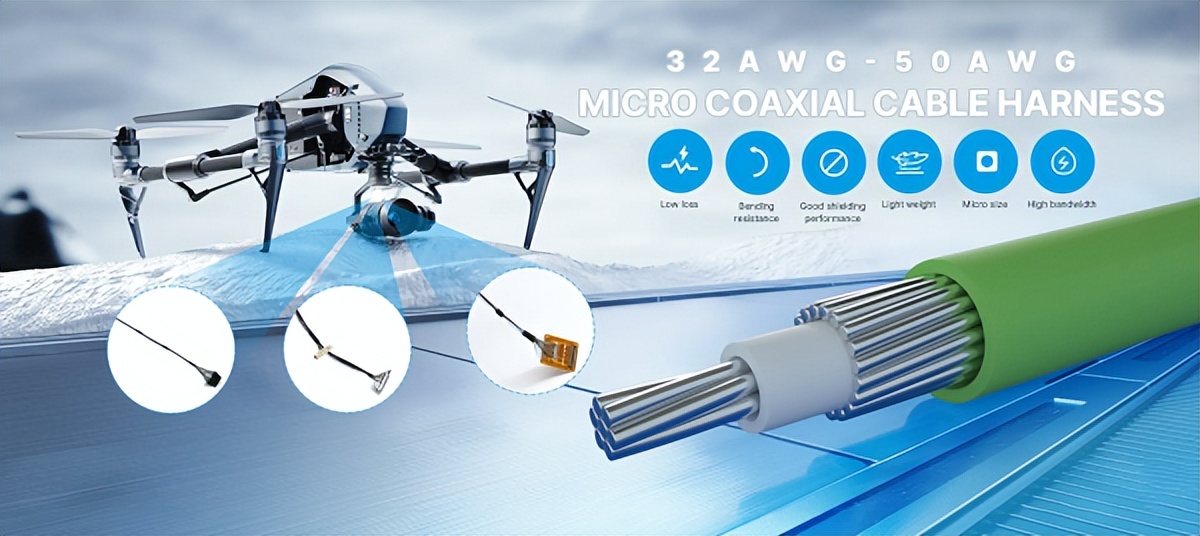Categorization:Harness Component
In today's world where electronic devices are constantly moving towards higher computational performance and higher resolution, the demand for high-speed differential signal transmission is increasingly urgent. Differential signals, with their excellent anti-interference capabilities and excellent signal integrity, are widely used in display interfaces, high-speed buses, and communication systems. However, traditional wiring methods often encounter challenges such as increased crosstalk and signal attenuation when faced with compact spaces and complex electromagnetic environments. At this point, **extremely thin coaxial cable bundles (Micro Coaxial Cable)** become an ideal solution. Through its unique coaxial shielding design and precise impedance control, it enables high-speed signals to be transmitted stably and with low loss even in limited spaces.
The structure and performance advantages of ultra-fine coaxial beam束
The extremely fine coaxial cable束 consists of a central conductor, insulating medium, metallic braid layer, and outer sheath, forming a closed coaxial shielding system. This structure inherently possesses excellent electromagnetic isolation properties, effectively suppressing external interference and preventing signal leakage. At the same time, its impedance control is precise, with a common value of 50Ω, which can meet the transmission needs of various high-speed interfaces. Unlike traditional cables, the flat design of micro coax saves wiring space and also reduces cross talk between signal lines, making it very suitable for use in compact devices with high-density wiring.
The application value of ultra-fine coaxial cable束
Micro coax performs excellently in various high-speed signal transmission scenarios. Whether it's the LVDS or eDP interface of laptop displays, high-speed data lines in tablets and smartphones, or internal connections in camera modules, drones, and AR/VR devices, the ultra-thin coaxial cable bundles provide high-bandwidth, low-interference signal paths. Its excellent shielding capability not only ensures clear transmission of images and data but also offers solid support for the overall electromagnetic compatibility of the equipment.
Section 3: Engineering Design and Application Precautions
In the design phase, engineers need to focus on the control of impedance matching and insertion loss. Extremely thin coaxial cables usually require specialized connectors to ensure a firm interface and reduce signal reflection. In situations with long transmission distances at high speeds, it is appropriate to use equalization compensation or signal amplification techniques to maintain high-quality signal integrity. In addition, reasonably planning the routing of the cables, avoiding sharp bends and stretches, is also an important means to enhance system reliability.
With precise impedance, high-efficiency shielding, miniaturization, and flexibility, ultra-fine coaxial cables have become a key medium for high-speed differential signal transmission in modern electronic devices. From notebook display modules to high-performance servers, from consumer electronics to industrial internet, micro coax is achieving a perfect balance between high bandwidth and small space. In the future, as AI and high-speed communication develop, its application scenarios will be even more extensive, and its potential cannot be overlooked.
I am[Suzhou Huichengyuan Electronic], Long-term focused on the design and customization of high-speed signal cable harnesses and ultra-fine coaxial cable harnesses, committed to providing customers with stable and reliable high-speed interconnect solutions. If you have related needs or want to learn more, please contact:Manager Zhang 18913228573 (WeChat same number)。